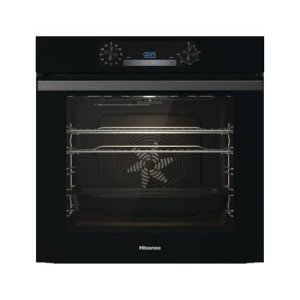Oven Built In It's Not As Hard As You Think
Understanding Built-in Electric Ovens: A Comprehensive Guide
In contemporary kitchens, built-in electric ovens have actually ended up being a basic feature, supplying convenience, performance, and a stylish combination into kitchen design. This article intends to notify homeowners and cooking enthusiasts about the benefits of built-in electric ovens, crucial considerations when selecting one, and maintenance tips to guarantee long-lasting functionality.
What is a Built-in Electric Oven?
A built-in electric oven is developed to be installed within cabinets or walls, perfectly blending into the kitchen's architecture. Unlike standalone ovens, these designs conserve floor space and can be located at eye level, assisting in simple access and monitoring while cooking.
Advantages of Built-in Electric Ovens
- Area Efficiency: These ovens make use of vertical space, making them perfect for smaller kitchens or those aiming to take full advantage of counter area.
- Visual Appeal: Built-in ovens supply a tidy and modern look that boosts the kitchen's general design.
- Ergonomics: They are set up at comfy heights, reducing the strain on the back and knees, especially when loading or discharging dishes.
- Advanced Features: Many built-in electric ovens featured high-tech functions like smart controls, convection cooking, and self-cleaning choices, which can make cooking much easier and more efficient.
- Improved Functionality: Models typically include extra features such as several cooking modes, timers, and temperature probes.
Key Considerations When Choosing a Built-in Electric Oven
When picking a built-in electric oven, a number of elements must be considered to guarantee it fulfills your cooking needs and fits within your kitchen design.
Size and Capacity
Built-in electric ovens normally come in various sizes. It's vital to measure the assigned area to make sure an appropriate fit. Here prevail sizes:
- Single Oven: 24 to 30 inches large, ideal for many cooking jobs.
- Double Oven: Two separate compartments, permitting you to prepare several dishes at different temperatures.
- Wall Ovens: Available in large sizes, matched for comprehensive cooking experiences.
Features
Choosing features that line up with your cooking practices is important. Think about the following alternatives:
- Convection Cooking: Distributes heat equally for consistent results.
- Smart Technology: Enables remote control and pre-heating by means of mobile phone apps.
- Self-Cleaning: Simplifies upkeep and cleaning processes.
- Steam Cooking: Adds wetness to meals for better cooking outcomes.
Installation Requirements
Built-in electric ovens require adequate electrical circuitry and ventilation choices. It's advisable to talk to experts throughout the setup phase to satisfy electrical codes and guarantee security.
Price Range
The cost of built-in electric ovens can differ considerably from budget plan choices (₤ 600 – ₤ 1,200) to high-end models (₤ 2,000 and above). Consider your spending plan and cooking frequency when selecting.
Cost Range
Features
Best For
₤ 600 – ₤ 1,200
Fundamental functions, manual controls
Casual cooks
₤ 1,200 – ₤ 2,000
Convection, wise technology
Severe home cooks
Above ₤ 2,000
Premium products, advanced features
Expert chefs or gourmet cooking lovers
Upkeep Tips for Built-in Electric Ovens
Guaranteeing that an electric oven operates effectively includes regular maintenance. Here are some useful ideas:
- Regular Cleaning: Wipe down the door and inside the oven after each usage to avoid grease buildup.
- Self-Cleaning Cycle: Utilize the self-cleaning function occasionally (if available). Follow the maker's guidelines for optimal effectiveness.
- Examine Seals and Gaskets: Inspect the door seals for wear and tear to preserve cooking effectiveness.
- Adjust Temperature: Regularly check and adjust the oven's temperature for precision cooking.
- Expert Servicing: Schedule annual maintenance checks with qualified service technicians, particularly for innovative models with numerous electronic elements.
Often Asked Questions (FAQs)
1. Are built-in electric ovens more effective than traditional ovens?
Yes, built-in electric ovens frequently have much better insulation and functions like convection cooking that can prepare food faster and evenly, conserving energy.
2. Can I install a built-in electric oven myself?
While some convenient individuals might select to attempt a DIY installation, it is advised to work with a professional to ensure safe and compliant installation.
3. How much power does a built-in electric oven use?
Generally, built-in electric ovens take in in between 2,400 to 5,000 watts, depending upon the design and features. Always describe the producer's specifications for accurate figures.
4. Do built-in electric ovens need special cabinetry?
Yes, built-in electric ovens need customized kitchen cabinetry or wall enclaves that support their weight and enable proper ventilation. Guarantee that the cabinets abides by installation guidelines detailed by the producer.
Built-in electric ovens are an important addition to any contemporary kitchen, offering an array of features that make cooking easier and satisfying. By understanding built-in oven and hob packages , choice requirements, and maintenance requirements associated with these ovens, consumers can make informed choices that line up with their cooking requirements and way of life preferences.
